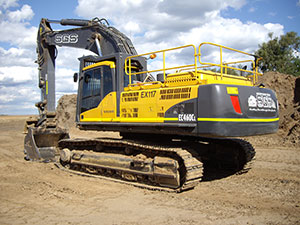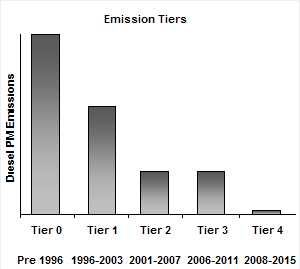Action is crucial due to the growth in particle pollution from this sector, increasing evidence of adverse health impacts, and the availability of proven technologies to reduce diesel emissions.

A non-road diesel machine (reproduced with permission from CJD Equipment Pty Ltd)
Pollution from non-road diesel engines
The non-road emissions sector covers
- diesel-powered construction and mining equipment
- rail locomotives
- ports equipment
- ships
Diesel engines are significant sources of fine particle and other types of air pollution. Many diesel engines, such as those in construction equipment, locomotives and cruise ships, operate in populated areas, which leads to higher exposure to emissions and greater health consequences for workers and residents.
In the NSW Greater Metropolitan Region alone
- there are around 100,000 or 15% of Australia's non-road diesel engines
- around 9,000 new engines are purchased every year
- non-road diesel engines account for about 5–10% of fine particle pollution
- according to the 2008 Air Emissions Inventory, more than 90% of non-road diesel fine particle emissions come from non-road vehicles and equipment, shipping and rail transport
Fine-particle emissions from diesel exhaust can be inhaled deep into the lungs and have been declared a carcinogen by the World Health Organization’s International Agency for Research on Cancer. Find out more about health effects of fine particle pollution at About air pollution and Managing particle pollution.


